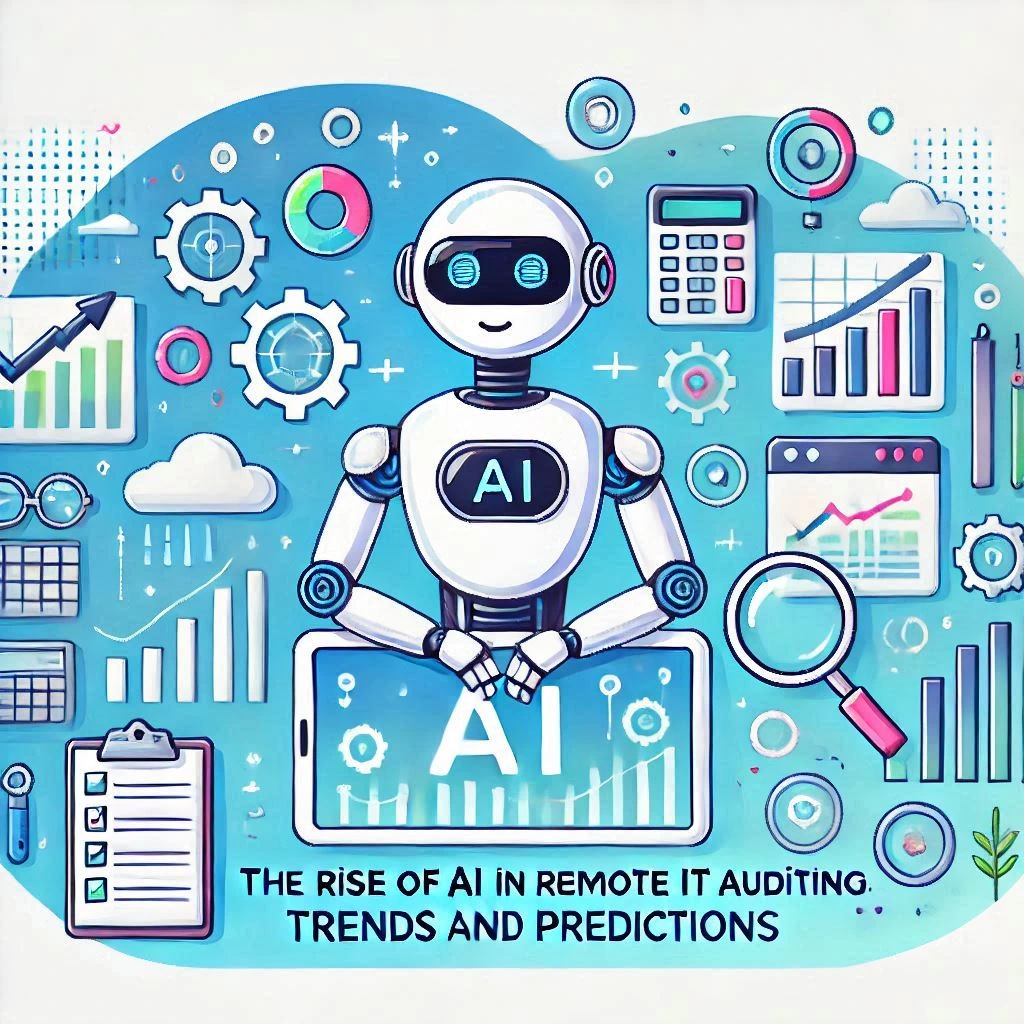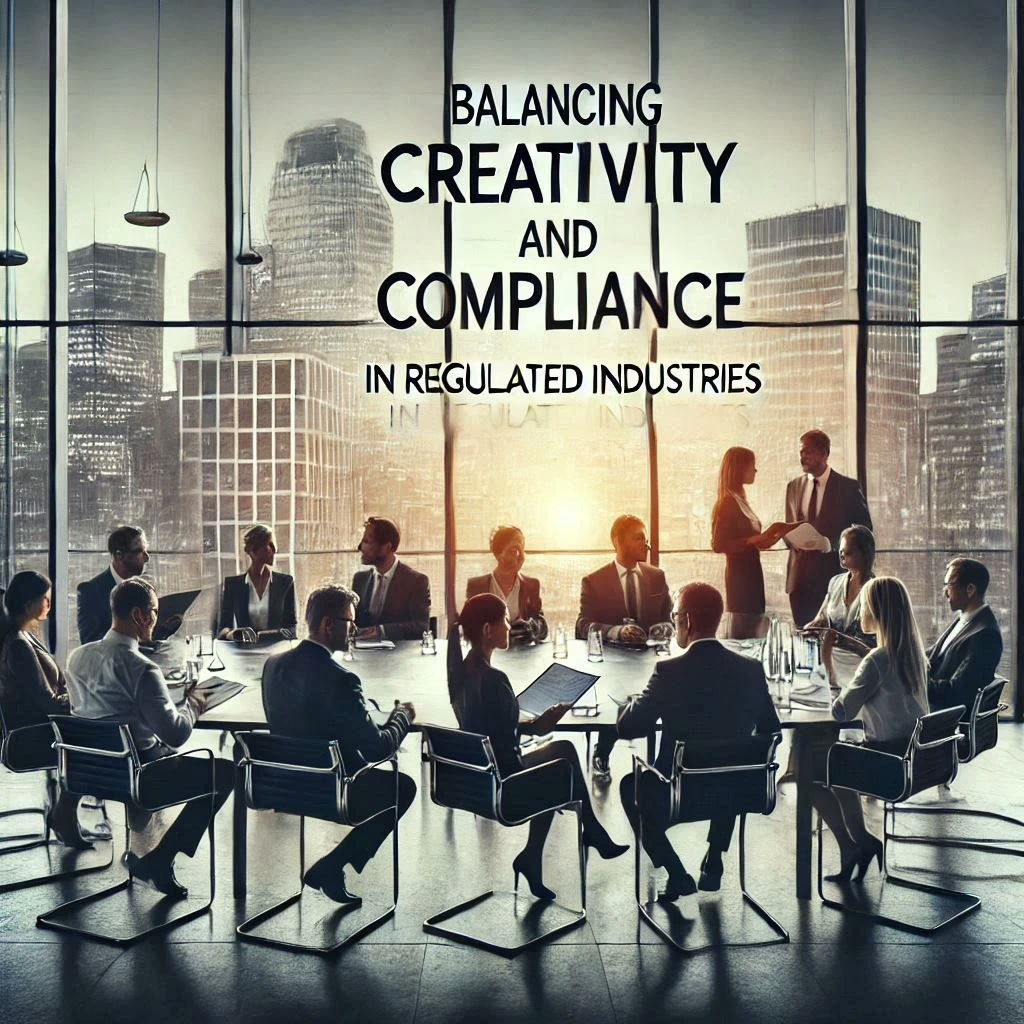Introduction
In recent years, the landscape of IT auditing has undergone a significant transformation, driven largely by advancements in technology and the increasing need for remote operations. Remote IT auditing refers to the practice of conducting audits from a distance, utilizing digital tools and technologies to assess an organization’s IT systems, controls, and processes without the need for physical presence. This approach has gained immense relevance, particularly in the wake of the COVID-19 pandemic, which accelerated the shift towards remote work and necessitated innovative solutions for maintaining audit integrity and effectiveness.
As organizations across various sectors embrace digital transformation, artificial intelligence (AI) has emerged as a pivotal force reshaping operational practices. AI technologies, including machine learning, natural language processing, and data analytics, are being integrated into numerous industries, enhancing efficiency, accuracy, and decision-making capabilities. In the realm of IT auditing, AI is not just a supplementary tool; it is becoming a cornerstone of modern auditing practices, enabling auditors to analyze vast amounts of data quickly and identify anomalies that may indicate risks or compliance issues.
The importance of AI in transforming IT auditing practices cannot be overstated. By automating routine tasks, AI allows auditors to focus on higher-level analysis and strategic insights, ultimately leading to more effective audits. Furthermore, AI-driven tools can enhance the accuracy of risk assessments and improve the overall quality of audit outcomes. As we delve deeper into the trends and predictions surrounding AI in remote IT auditing, it is essential to recognize how these technologies are not only changing the way audits are conducted but also redefining the role of IT auditors in a rapidly evolving digital landscape.
The Current Landscape of IT Auditing
As organizations increasingly rely on technology to drive their operations, the role of IT auditors has become more critical than ever. Traditional IT auditing methods have evolved significantly, but they still face numerous challenges, especially in the context of remote auditing. This section explores the existing practices in IT auditing, the hurdles auditors encounter in remote settings, and the pressing need for efficiency and accuracy in their work.
Overview of Traditional IT Auditing Methods
Traditionally, IT auditing involved a comprehensive review of an organization’s information systems, processes, and controls to ensure compliance with regulations and standards. Auditors would typically conduct on-site assessments, which included:
- Physical Inspections: Auditors would examine hardware and software configurations, access controls, and security measures in person.
- Interviews and Observations: Engaging with IT staff and management to understand processes and identify potential risks was a key part of the audit.
- Documentation Review: Auditors would analyze policies, procedures, and logs to assess compliance and effectiveness.
These methods, while effective, often required significant time and resources, leading to a lengthy audit cycle. The reliance on manual processes also increased the risk of human error, which could compromise the accuracy of audit findings.
Challenges Faced in Remote Auditing
The shift to remote auditing, accelerated by the COVID-19 pandemic, has introduced a new set of challenges for IT auditors. Some of the most pressing issues include:
- Data Accessibility: Remote audits often rely on digital access to systems and data. However, auditors may face restrictions due to security protocols, making it difficult to obtain necessary information. This can lead to incomplete assessments and hinder the auditor’s ability to form a comprehensive view of the IT environment[1].
- Communication Barriers: Effective communication is crucial in auditing, yet remote settings can complicate interactions. Misunderstandings may arise due to the lack of face-to-face engagement, and the reliance on digital communication tools can lead to delays in information exchange[2].
- Technology Limitations: Not all organizations have the necessary technology infrastructure to support remote audits effectively. Issues such as inadequate software tools for collaboration and data analysis can impede the audit process, resulting in inefficiencies and potential oversights[3].
The Need for Efficiency and Accuracy in IT Audits
In the face of these challenges, the demand for efficiency and accuracy in IT audits has never been more pronounced. Organizations are increasingly looking for ways to streamline their audit processes while ensuring that findings are reliable and actionable. This need is driving the adoption of advanced technologies, particularly artificial intelligence (AI), which promises to transform the auditing landscape.
AI can enhance the efficiency of IT audits by automating routine tasks, such as data collection and analysis, allowing auditors to focus on more complex issues that require human judgment. Furthermore, AI algorithms can analyze vast amounts of data quickly, identifying patterns and anomalies that may indicate risks or compliance issues. This capability not only improves the accuracy of audits but also enables auditors to provide more timely insights to their organizations[4].
As the landscape of IT auditing continues to evolve, embracing AI and other digital tools will be essential for auditors to overcome existing challenges and meet the growing demands of their roles.
AI Technologies Transforming Remote IT Auditing
The integration of artificial intelligence (AI) into remote IT auditing is revolutionizing the field, enabling auditors to enhance efficiency, accuracy, and insight. As organizations increasingly adopt remote work models, the demand for innovative auditing solutions has surged. Here, we explore specific AI technologies that are transforming the landscape of IT auditing, focusing on their applications and benefits.
Machine Learning for Anomaly Detection and Pattern Recognition
Machine learning (ML) is at the forefront of AI technologies impacting IT auditing. By leveraging algorithms that can learn from data, ML enables auditors to identify anomalies and recognize patterns within vast datasets. This capability is particularly valuable in detecting fraudulent activities or compliance breaches that may go unnoticed through traditional auditing methods.
- Anomaly Detection: ML algorithms can analyze historical data to establish a baseline of normal operations. When deviations from this baseline occur, such as unusual transaction patterns or unexpected system access, the system flags these anomalies for further investigation. This proactive approach not only enhances the effectiveness of audits but also reduces the time spent on manual reviews[1].
- Pattern Recognition: Beyond anomaly detection, ML can identify trends and patterns that inform risk assessments. For instance, by analyzing user behavior over time, auditors can pinpoint areas of potential risk, allowing organizations to implement preventive measures before issues escalate[2].
Natural Language Processing (NLP) for Analyzing Documentation and Reports
Natural Language Processing (NLP) is another AI technology that is reshaping remote IT auditing. NLP enables machines to understand, interpret, and generate human language, making it an invaluable tool for auditors dealing with extensive documentation.
- Document Analysis: Auditors often sift through large volumes of reports, policies, and compliance documents. NLP can automate this process by extracting relevant information, summarizing key points, and identifying inconsistencies or compliance gaps. This not only saves time but also enhances the accuracy of the audit process[3].
- Sentiment Analysis: NLP can also be employed to gauge the sentiment of communications within an organization, such as emails or feedback forms. Understanding employee sentiment can provide auditors with insights into organizational culture and potential areas of concern that may require further investigation[4].
Robotic Process Automation (RPA) for Automating Repetitive Tasks
Robotic Process Automation (RPA) is a game-changer for IT auditors, particularly in automating repetitive and time-consuming tasks. RPA uses software robots to perform routine tasks that would otherwise require human intervention, allowing auditors to focus on more strategic activities.
- Data Collection and Reporting: RPA can automate the collection of data from various systems, ensuring that auditors have access to the most current information without manual input. This capability streamlines the reporting process, enabling auditors to generate reports quickly and accurately[5].
- Compliance Checks: RPA can also be programmed to conduct regular compliance checks against established policies and regulations. By automating these checks, organizations can ensure ongoing compliance and reduce the risk of human error, which is particularly crucial in highly regulated industries[6].
Benefits of AI in Remote IT Auditing
The integration of artificial intelligence (AI) into remote IT auditing is revolutionizing the way audits are conducted, offering a plethora of benefits that enhance the overall auditing process. As organizations increasingly adopt remote auditing practices, the role of AI becomes more pivotal, providing tools that not only streamline operations but also improve the quality of audits. Here, we explore the key advantages that AI brings to the realm of remote IT auditing.
Increased Efficiency and Speed of Audits
One of the most significant benefits of AI in remote IT auditing is the remarkable increase in efficiency and speed. Traditional auditing processes often involve manual data collection, analysis, and reporting, which can be time-consuming and labor-intensive. AI technologies, such as machine learning algorithms, can automate these tasks, allowing auditors to focus on more strategic aspects of their work. For instance, AI can quickly analyze vast amounts of data, identify patterns, and generate insights in a fraction of the time it would take a human auditor[1][2]. This acceleration not only shortens the audit cycle but also enables organizations to respond more swiftly to compliance requirements and risk management needs.
Enhanced Accuracy and Reduction of Human Error
Human error is an inherent risk in any auditing process, often leading to inaccurate findings and potentially costly consequences. AI significantly mitigates this risk by providing tools that enhance accuracy. Advanced AI algorithms can analyze data with a level of precision that surpasses human capabilities, reducing the likelihood of oversight or misinterpretation[3]. Furthermore, AI systems can continuously learn from past audits, improving their accuracy over time. This capability ensures that auditors can rely on data-driven insights, leading to more informed decision-making and a higher quality of audit outcomes[4].
Ability to Handle Large Volumes of Data Seamlessly
In today’s digital landscape, organizations generate vast amounts of data daily. Traditional auditing methods struggle to keep pace with this data explosion, often resulting in incomplete analyses and missed opportunities for insights. AI excels in this area by seamlessly processing and analyzing large volumes of data from various sources, including cloud services, databases, and enterprise applications[5]. This capability allows auditors to gain a comprehensive view of an organization’s IT environment, identifying potential risks and compliance issues that may otherwise go unnoticed. By leveraging AI, auditors can ensure that their assessments are thorough and reflective of the current state of the organization’s IT systems.
Challenges and Considerations
As artificial intelligence (AI) continues to reshape the landscape of IT auditing, particularly in remote settings, it is essential to address the potential downsides and challenges that accompany this technological evolution. While AI offers numerous advantages, such as increased efficiency and enhanced data analysis capabilities, it also presents significant concerns that IT auditors must navigate carefully.
Data Privacy and Security Concerns
One of the foremost challenges in implementing AI in remote IT auditing is the heightened risk to data privacy and security. AI systems often require access to vast amounts of sensitive data to function effectively, which can expose organizations to potential breaches and unauthorized access. The integration of AI tools may inadvertently create vulnerabilities, especially if these systems are not adequately secured or if they operate in environments lacking robust cybersecurity measures.
Moreover, the use of AI in auditing raises questions about compliance with data protection regulations, such as the General Data Protection Regulation (GDPR) in Europe. Organizations must ensure that their AI systems are designed to protect personal data and that they adhere to legal standards, which can complicate the deployment of AI technologies in auditing processes[1][2].
The Need for Skilled Personnel
The successful implementation of AI in remote IT auditing is contingent upon having skilled personnel who can effectively manage and oversee these advanced tools. While AI can automate many tasks, it still requires human oversight to ensure accuracy and reliability. IT auditors must possess a deep understanding of both the technology and the auditing processes to interpret AI-generated insights correctly and to make informed decisions based on those insights.
This need for specialized skills can create a talent gap, as not all IT auditors are equipped with the necessary training in AI technologies. Organizations may face challenges in recruiting or upskilling their workforce to meet these demands, which can hinder the effective integration of AI into their auditing practices[3][4].
Potential Bias in AI Algorithms
Another critical consideration is the potential for bias in AI algorithms, which can have significant implications for the auditing process. AI systems learn from historical data, and if that data contains biases—whether intentional or unintentional—the AI can perpetuate and even amplify these biases in its analyses. This can lead to skewed audit results, misinterpretations, and ultimately, flawed decision-making.
For instance, if an AI tool is trained on data that reflects systemic biases within an organization, it may overlook critical areas of risk or unfairly target certain departments or individuals during audits. This not only undermines the integrity of the audit process but can also damage trust in the auditing function as a whole. IT auditors must be vigilant in assessing the data used to train AI systems and implement measures to mitigate bias, ensuring that their audits are fair and accurate[5][6].
Future Trends in AI and Remote IT Auditing
As organizations adapt to a digital-first approach, the integration of AI into remote IT auditing processes is not just a trend but a necessity. This section explores the emerging trends and future predictions for AI in the field of remote IT auditing, focusing on its integration with cloud technologies, its role in compliance and regulatory reporting, and the evolution of remote IT auditing roles.
Increased Integration of AI with Cloud Technologies
The shift to cloud computing has revolutionized how organizations manage their IT infrastructure, and AI is playing a pivotal role in this transition. As more businesses migrate their operations to the cloud, the demand for robust auditing solutions that can operate in these environments is growing. AI technologies are increasingly being integrated into cloud platforms to enhance data analysis, risk assessment, and anomaly detection.
- Enhanced Data Analytics: AI algorithms can process vast amounts of data in real-time, allowing auditors to identify patterns and anomalies that may indicate potential risks or compliance issues. This capability is particularly valuable in cloud environments where data is continuously generated and stored.
- Automated Risk Assessment: AI can automate the risk assessment process by evaluating cloud configurations and identifying vulnerabilities. This not only speeds up the auditing process but also improves accuracy, as AI can analyze configurations against best practices and compliance standards more efficiently than manual methods.
- Continuous Monitoring: With AI, organizations can implement continuous auditing practices, where systems are monitored in real-time for compliance and security breaches. This proactive approach allows for immediate remediation of issues, reducing the potential impact of security incidents.
The Role of AI in Compliance and Regulatory Reporting
Compliance with regulatory standards is a critical aspect of IT auditing, and AI is set to transform how organizations approach this challenge. As regulations become more complex and data-driven, AI tools are emerging as essential resources for auditors.
- Streamlined Reporting Processes: AI can automate the generation of compliance reports by extracting relevant data from various sources and compiling it into standardized formats. This not only saves time but also reduces the risk of human error in reporting.
- Predictive Compliance: By leveraging machine learning algorithms, AI can predict potential compliance issues before they arise. This predictive capability allows organizations to take proactive measures to address vulnerabilities, ensuring they remain compliant with evolving regulations.
- Enhanced Audit Trails: AI can improve the integrity of audit trails by providing detailed logs of all transactions and changes made within IT systems. This transparency is crucial for regulatory compliance and can simplify the audit process by providing auditors with clear evidence of compliance efforts.
Predictions for the Evolution of Remote IT Auditing Roles
As AI continues to reshape the IT auditing landscape, the roles and responsibilities of auditors are also expected to evolve. The following predictions highlight how remote IT auditing roles may change in the coming years:
- Shift Towards Strategic Advisory Roles: With AI handling many of the routine tasks associated with auditing, IT auditors will increasingly transition into strategic advisory roles. This shift will require auditors to develop skills in data interpretation and strategic thinking, enabling them to provide valuable insights to organizations.
- Increased Collaboration with AI Systems: Future IT auditors will need to work closely with AI systems, interpreting the data and insights generated by these technologies. This collaboration will necessitate a strong understanding of AI capabilities and limitations, as well as the ability to communicate findings effectively to stakeholders.
- Focus on Cybersecurity and Risk Management: As organizations face growing cybersecurity threats, remote IT auditors will likely place greater emphasis on risk management and cybersecurity audits. This focus will require auditors to stay updated on the latest security trends and technologies, ensuring they can effectively assess and mitigate risks.
Preparing for an AI-Driven Future in IT Auditing
The integration of AI technologies into auditing processes is not merely a trend; it represents a fundamental shift in how audits are conducted, analyzed, and reported. For IT auditors and technology enthusiasts, understanding and adapting to these changes is crucial for maintaining relevance and effectiveness in their roles. Here, we explore the importance of continuous learning, strategies for integrating AI into auditing practices, and the necessity of collaboration between IT auditors and AI specialists.
Importance of Continuous Learning and Upskilling
In an era where technology evolves at an unprecedented pace, continuous learning and upskilling have become essential for IT auditors. The rise of AI introduces new tools and methodologies that auditors must familiarize themselves with to remain competitive.
- Embrace Lifelong Learning: IT auditors should actively seek out training programs, workshops, and certifications focused on AI and machine learning. This not only enhances their technical skills but also equips them with the knowledge to leverage AI tools effectively in their audits[1].
- Stay Updated on AI Developments: Regularly following industry news, attending conferences, and participating in webinars can help auditors stay informed about the latest AI advancements and their implications for auditing practices. This proactive approach ensures that auditors can adapt their strategies in line with emerging technologies[2].
- Develop Soft Skills: While technical skills are vital, soft skills such as critical thinking, problem-solving, and communication are equally important. These skills enable auditors to interpret AI-generated insights and communicate findings effectively to stakeholders[3].
Strategies for Integrating AI into Current Auditing Practices
Integrating AI into existing auditing practices requires a strategic approach. Here are some effective strategies for IT auditors:
- Identify Repetitive Tasks: Auditors should start by identifying repetitive and time-consuming tasks within their auditing processes that can be automated using AI. For instance, data analysis, risk assessment, and compliance checks can be streamlined through AI algorithms, allowing auditors to focus on more complex issues[4].
- Utilize AI-Powered Tools: There are numerous AI-powered auditing tools available that can enhance the efficiency and accuracy of audits. Tools that utilize machine learning can analyze vast amounts of data quickly, identify anomalies, and provide insights that may not be immediately apparent through traditional methods[5].
- Pilot AI Projects: Before fully integrating AI into auditing practices, auditors should consider running pilot projects. These projects can help assess the effectiveness of AI tools in real-world scenarios, allowing auditors to refine their approaches based on practical outcomes[6].
- Establish Clear Objectives: When integrating AI, it is crucial to set clear objectives and metrics for success. This ensures that the implementation of AI tools aligns with the overall goals of the audit process and provides measurable benefits[7].
Collaboration Between IT Auditors and AI Specialists
The successful integration of AI into IT auditing is not solely the responsibility of auditors; it requires collaboration with AI specialists. This partnership can enhance the effectiveness of audits in several ways:
- Cross-Disciplinary Teams: Forming cross-disciplinary teams that include IT auditors and AI specialists can foster innovation and improve audit outcomes. These teams can work together to develop tailored AI solutions that address specific auditing challenges[8].
- Knowledge Sharing: Collaboration encourages knowledge sharing between auditors and AI experts. Auditors can provide insights into the auditing process, while AI specialists can offer expertise on how to leverage AI technologies effectively. This exchange of knowledge can lead to more robust auditing practices[9].
- Continuous Feedback Loop: Establishing a continuous feedback loop between auditors and AI specialists can help refine AI tools and methodologies. By providing real-time feedback on AI performance, auditors can help improve the accuracy and relevance of AI-generated insights[10].
Conclusion
The integration of artificial intelligence (AI) into remote IT auditing is not just a trend; it represents a significant shift in how audits are conducted, enhancing efficiency, accuracy, and overall effectiveness. As we have explored throughout this discussion, AI’s transformative potential in remote IT auditing is profound, reshaping traditional methodologies and introducing innovative tools that streamline processes. AI technologies, such as machine learning and data analytics, empower IT auditors to analyze vast amounts of data quickly and accurately, identifying anomalies and risks that may have gone unnoticed in manual audits. This capability not only improves the quality of audits but also allows auditors to focus on higher-value tasks, such as strategic risk assessment and advisory roles. Furthermore, AI facilitates continuous auditing practices, enabling organizations to maintain real-time oversight of their IT environments, which is crucial in today’s fast-paced digital landscape.
Find out more about Shaun Stoltz https://www.shaunstoltz.com/about/
This post was written by an AI and reviewed/edited by a human.



